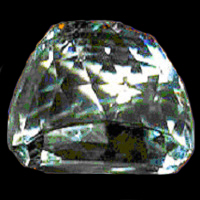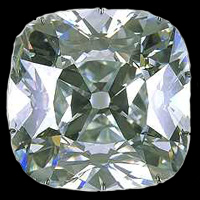




Looking After Your Finds - Reference

Powered By Sispro1
Famous Diamonds

_01.jpg)
The Kohinoor Diamond
Koh-i-Noor, Diamond - the Royal Precious Stone
Portrayal of the Kohinoor Diamond:
Koh-i-noor Diamonds The Kohinoor Diamond is time lined as one of the most renowned diamonds in the whole of the world. The Kohinoor diamond was 1st revealed or even talked in 1306 when it was squandered off from the Rajah of Malwa, whose family had possessed and owned this master of a diamond for centuries. It was portrayed as been evaluated to 186 carats and it even was an oval cut white diamond the second in the list of precious colored diamonds.
The Kohinoor was shaped and sized similar to that of a diminutive hen's egg. The Kohinoor diamond was owned by various Indian and Persian rulers and it even claimed its royal trail and became a part of the Crown Jewels of England at the time that Queen Victoria was decreed empress of India.
The Kohinoor was re-cut and chiseled off at this tenure and now it weighs as much as 108.93 carats and is reserved in the Tower of London.
Origin / Connotation of the name Kohinoor Diamond:
The Kohinoor (Koh-i-Noor) instigated from India in Golconda at the very Indian Kollur mine and was explicitly mined from the Rayalaseema (signifying Land of Stones) diamond mine during the period of the rule of the Kakatiya empires rule. The Kohinoor was then travelled across from one ruling dynasty to the next as the empire kept throbbing for the Indian Territory. The primitive nomenclature of this precious stone was 'Samantik Mani' (which means Prince and leader among diamonds).
In 1739 the King of Persia, His highness Nadir Shah, plagued India and was alleged to be refer to as the diamond as the "Mountain of Light". The Persian-Arabic statements for "Mountain of Light" were Koh-i-Noor. The splendor of the diamond and its significance symbolized the supremacy of an Empire and hence the superiority of the King.
Curse of the stone and its present supremacy:
The blight of the hyper precious Kohinoor Diamond dates all the way back to a Hindu historical texts from the instance of the 1st authenticated manifestation of the stone in the early 13th centuries in 1306.The annoyance of the Kohinoor stone reads:
"He who possesses this diamond will claim the planet, but will in addition, will get to know all its adversities. Only divinity, or a lady, can sport it with harmony."
The record and subsists of the rulers who once owned the precious stone the Kohinoor were crammed with violence, murders, disfigurements, torture and treachery. The British Royal families were perceptibly responsive of the Curse of the Kohinoor and from the sovereignty of Queen Victoria, when the Kohinoor diamond translated into their custody; it has for ever gone to the spouse of the male heir to the British royal highness the throne. It is currently kept in the Tower of London.
Portrayal of the Kohinoor Diamond:
Koh-i-noor Diamonds The Kohinoor Diamond is time lined as one of the most renowned diamonds in the whole of the world. The Kohinoor diamond was 1st revealed or even talked in 1306 when it was squandered off from the Rajah of Malwa, whose family had possessed and owned this master of a diamond for centuries. It was portrayed as been evaluated to 186 carats and it even was an oval cut white diamond the second in the list of precious colored diamonds.
The Kohinoor was shaped and sized similar to that of a diminutive hen's egg. The Kohinoor diamond was owned by various Indian and Persian rulers and it even claimed its royal trail and became a part of the Crown Jewels of England at the time that Queen Victoria was decreed empress of India.
The Kohinoor was re-cut and chiseled off at this tenure and now it weighs as much as 108.93 carats and is reserved in the Tower of London.
Origin / Connotation of the name Kohinoor Diamond:
The Kohinoor (Koh-i-Noor) instigated from India in Golconda at the very Indian Kollur mine and was explicitly mined from the Rayalaseema (signifying Land of Stones) diamond mine during the period of the rule of the Kakatiya empires rule. The Kohinoor was then travelled across from one ruling dynasty to the next as the empire kept throbbing for the Indian Territory. The primitive nomenclature of this precious stone was 'Samantik Mani' (which means Prince and leader among diamonds).
In 1739 the King of Persia, His highness Nadir Shah, plagued India and was alleged to be refer to as the diamond as the "Mountain of Light". The Persian-Arabic statements for "Mountain of Light" were Koh-i-Noor. The splendor of the diamond and its significance symbolized the supremacy of an Empire and hence the superiority of the King.
Curse of the stone and its present supremacy:
The blight of the hyper precious Kohinoor Diamond dates all the way back to a Hindu historical texts from the instance of the 1st authenticated manifestation of the stone in the early 13th centuries in 1306.The annoyance of the Kohinoor stone reads:
"He who possesses this diamond will claim the planet, but will in addition, will get to know all its adversities. Only divinity, or a lady, can sport it with harmony."
The record and subsists of the rulers who once owned the precious stone the Kohinoor were crammed with violence, murders, disfigurements, torture and treachery. The British Royal families were perceptibly responsive of the Curse of the Kohinoor and from the sovereignty of Queen Victoria, when the Kohinoor diamond translated into their custody; it has for ever gone to the spouse of the male heir to the British royal highness the throne. It is currently kept in the Tower of London.

The Orloff Diamond
The Regent Diamond
Regent Diamond The audacious history of the Regent is very much like that of numerous other great diamonds. Gluttony, assassinate and compunction play a part in the breach chapter. Trouble - biased, communal, and individual - accompanies this precious stone to its final quiescent place. Initially known as the Pitt, this 410-carat stone was one of the very last bulky diamonds to be originated in India. It is told to have been revealed by a slave in the Parteal Mines (also told 'Partial') on the Krishna River about 1701.
The slave scarfs the massive rough concealing it in bandages of a self inflicted leg lesion, and fled to the seacoast.
There, he revealed his clandestine to an English sea captain, presenting him half the value of the stone in turn for secure passageway to a gratis country. But during the expedition to Bombay, enticement overcame this oceangoing man and he murdered the slave and took the diamond. After trading it to an Indian diamond mercantile named Jamchund for about $5000, the captain misspent the profits in debauchery and, in a fit of repentance and frenzy tremens, hanged him-self.
In 1702, Jamchund traded the stone for about a sum of $100,000 to Governor Thomas Pitt of Ft. George, Madras, who was the grandpa of William Pitt of American Revolutionary fame. Acknowledged to historians as the "Elder Pitt," William was the British Prime Minister for whom Pittsburgh, Pennsylvania, was christened. He sent it to England and had it shaped into a 140.50 carat cushion-shaped dazzling cut, measuring just about 32mm 34mm 25mm. The cutting exhausted 2 years and cost about $25,000, but a quantity of less important stones brought more than $35,000; some of these stones were rose-cut stones that were traded to Peter the Great of Russia. The chief gem, which has but one extremely diminutive deficiency, is in the present day measured one of the premium and most radiant of the acknowledged huge diamonds.
The desirable gem vanished, jointly with the uniformly famed Sancy and French Blue (from which the Hope stone was cut); when the Garde Meuble (Royal Treasury) was robbed of its marvelous jewels in 1792, for the duration of the premature part of the Revolution. Some of the famed stones were soon found back, but the Regent could not at 1st be traced. After 15 months, however, it was found, having been concealed in a hole beneath the timberwork of a Paris loft.
Regent Diamond The audacious history of the Regent is very much like that of numerous other great diamonds. Gluttony, assassinate and compunction play a part in the breach chapter. Trouble - biased, communal, and individual - accompanies this precious stone to its final quiescent place. Initially known as the Pitt, this 410-carat stone was one of the very last bulky diamonds to be originated in India. It is told to have been revealed by a slave in the Parteal Mines (also told 'Partial') on the Krishna River about 1701.
The slave scarfs the massive rough concealing it in bandages of a self inflicted leg lesion, and fled to the seacoast.
There, he revealed his clandestine to an English sea captain, presenting him half the value of the stone in turn for secure passageway to a gratis country. But during the expedition to Bombay, enticement overcame this oceangoing man and he murdered the slave and took the diamond. After trading it to an Indian diamond mercantile named Jamchund for about $5000, the captain misspent the profits in debauchery and, in a fit of repentance and frenzy tremens, hanged him-self.
In 1702, Jamchund traded the stone for about a sum of $100,000 to Governor Thomas Pitt of Ft. George, Madras, who was the grandpa of William Pitt of American Revolutionary fame. Acknowledged to historians as the "Elder Pitt," William was the British Prime Minister for whom Pittsburgh, Pennsylvania, was christened. He sent it to England and had it shaped into a 140.50 carat cushion-shaped dazzling cut, measuring just about 32mm 34mm 25mm. The cutting exhausted 2 years and cost about $25,000, but a quantity of less important stones brought more than $35,000; some of these stones were rose-cut stones that were traded to Peter the Great of Russia. The chief gem, which has but one extremely diminutive deficiency, is in the present day measured one of the premium and most radiant of the acknowledged huge diamonds.
The desirable gem vanished, jointly with the uniformly famed Sancy and French Blue (from which the Hope stone was cut); when the Garde Meuble (Royal Treasury) was robbed of its marvelous jewels in 1792, for the duration of the premature part of the Revolution. Some of the famed stones were soon found back, but the Regent could not at 1st be traced. After 15 months, however, it was found, having been concealed in a hole beneath the timberwork of a Paris loft.

The Regent Diamond
Rocks & Minerals Menu
Copyright All Rights Reserved by Nigel G Wilcox E-Mail: ngwilcox100@gmail.com
Complimentary Topics
Designed by Nigel G Wilcox
The Paragon Of Metal Detecting
& Archaeology
& Archaeology
Who Owns the World's Gold?
[1]
[3]
[4]
[5]
[6]
[7]
[8]
Famous Diamonds
Group Pages
Pages
Member NCMD
Reference Menu




















